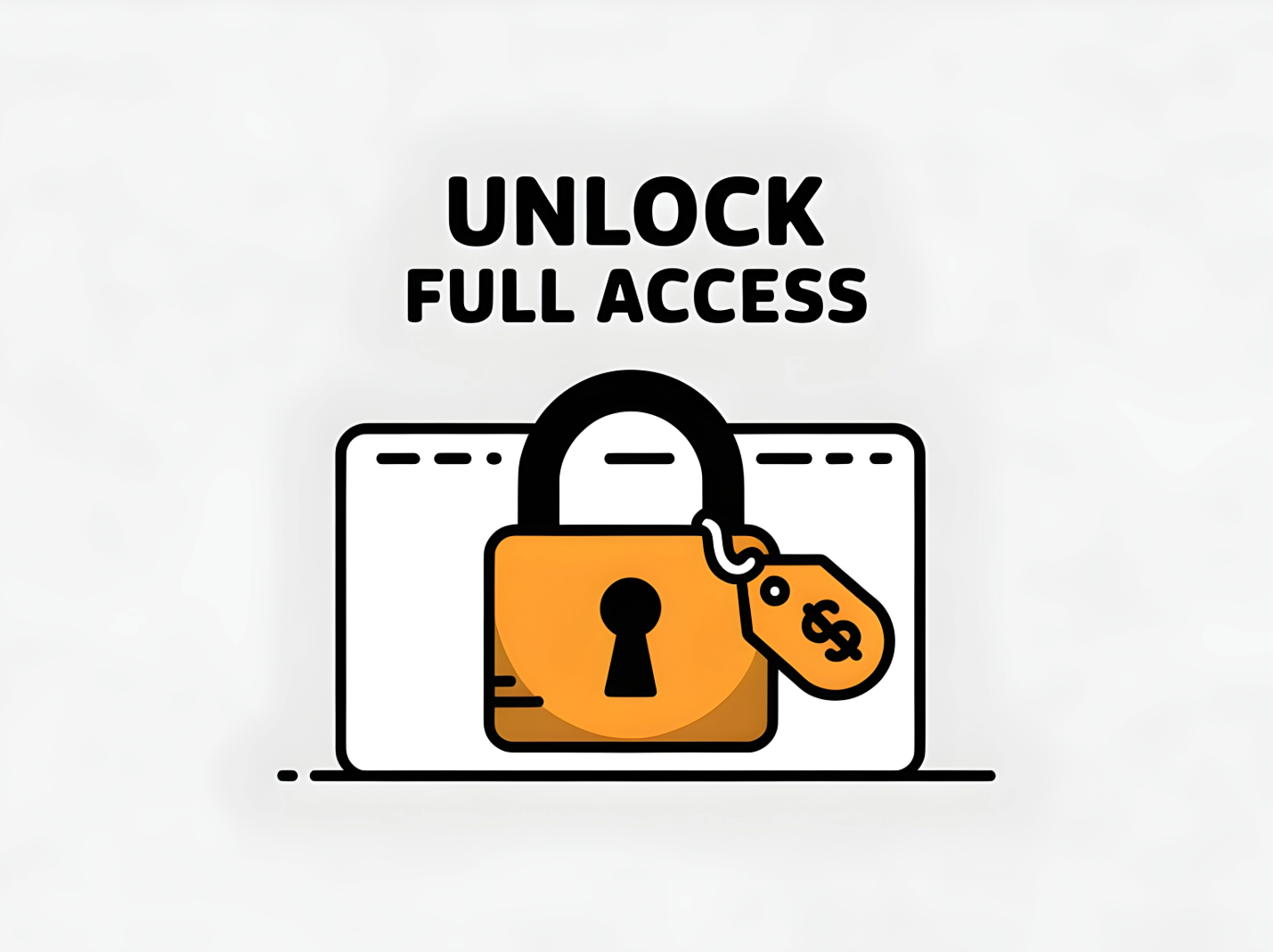
Imagine being a STEM (Science, Engineering, Technology, and Math) student at a small teaching university, working on your senior thesis at 2 am. Searching through Google Scholar, you click on a journal article title to read through the abstract. You smile. It’s the perfect addition. You click the “download PDF” button, excited to finally finish off your paragraph. Then your face falls. You’ve received this pop-up in red lettering: “Get access to the full version of this article. View access options below.” You’ve hit a paywall.
I am, unfortunately, intimately familiar with this experience.
For my undergraduate senior thesis, I conducted and later published a 41-page literature review, citing around 70 references. After joining the master’s program, my classwork shifted from didactic lectures to 6000-level student-led seminar courses, in which primary literature articles are reviewed and presented by students weekly and followed by guided discussion. Furthermore, in preparation for my master’s capstone project, I wrote and submitted a 13-page grant proposal with around 20 references, subsequently receiving grant funds to support my research.
Evidently, I frequently search for and read journal articles. And at a non-R1 research institution, this job becomes incredibly hair-pulling when there is a limited information resources budget and, consequently, restricted subscriptions to journal databases.
There’s nothing more joyous than discovering that “perfect abstract” I mentioned above, only to find that the full article exists behind a $30 paywall in a journal to which my institution is not subscribed.
Thirty dollars? For a solitary journal article?
[RELATED: Challenging the Academic Publisher Oligopoly]
This problem is not limited to me or my university. Students attending community colleges, universities with limited funding, and even high school students—not to mention researchers in low-income countries—struggle to access journal articles, particularly those from prestigious journals such as Science and Nature. At journals such as these, the paywall exists to cover the publishing costs and facilitate quality control, as well as to maintain integrity through the establishment of exclusiveness.
However, there is also a valid argument that monetary greed may play a part in the exorbitant costs. Critics of paywalled journal articles note that large publishing companies hold a monopoly over journals due to the consolidation of small companies, which allows the journals to charge high prices to both individual readers and subscribing institutions.
Consequently, although well-funded research institutions can afford the costs, smaller institutions and individuals struggle, leading to an unfair disparity in both the quality and quantity of research that can be accessed and read by students.
Fortunately, some headway has been made in the United States’s science policy to reduce journal article paywalls and allow for more equal public access. Two core memorandums were issued by the White House Office of Science and Technology Policy (OSTP) in an effort towards ensuring public access to all publications associated with federally funded research.
In 2013, the memorandum from then director John P. Holdren required each government agency with a research and development (R&D) budget greater than $100 million—Department of Health and Human Services (HHS), the National Science Foundation (NSF), etc.—to, among other things, create a plan for allowing public viewership without a paywall. The details of said plan were as follows:
a) Ensure that the public can read, download, and analyze in digital form final peerreviewed manuscripts or final published documents within a timeframe that is appropriate for each type of research conducted or sponsored by the agency. Specifically, each agency:
i) shall use a twelve-month post-publication embargo period as a guideline for making research papers publicly available; however, an agency may tailor its plan as necessary to address the objectives articulated in this memorandum, as well as the challenges and public interests that are unique to each field and mission combination, and
ii) shall also provide a mechanism for stakeholders to petition for changing the embargo period for a specific field by presenting evidence demonstrating that the plan would be inconsistent with the objectives articulated in this memorandum;
[RELATED: As Campuses Die, So Might Smiley Faces]
In other words, the government agencies would be asked to create a plan in which all research generated from their program would become available to the public after a temporary restriction period of around 12 months.
The responsibility would not be on the journals to provide access, but rather a twofold responsibility of the grant funding agency alongside the authors. The agency would be responsible for laying out the action plan, including the restriction period, which the authors would follow. The authors would then be responsible for either having the manuscript published as open access by the journal to which they choose to submit it, or they can have it released from a repository as an Author’s Accepted Manuscript (AAM).
The drawback of publishing open access is the hefty fees—i.e., article processing charges (APCs)—collected by the journals to cover copy editing, peer review, and other publication fees.
Enter AAMs.
These include all content that would appear in the final publication, minus the style and formatting of the journal to which the article has been submitted. These documents are released to the public at no charge to the author when deposited in a designated repository—i.e., PubMed Central (PMC) for the National Institute of Health (NIH).
Although they may not be as aesthetically pleasing as the official journal’s publication, they are the most cost-effective method of releasing the complete article to the public.
In 2022, a revision memorandum of the 2013 policy was released by the White House OSTP, which made fundamental changes to the public release policy. The most significant line from the memorandum provides the following requirement for all federal funding agencies:
Update their public access policies as soon as possible, and no later than December 31st, 2025, to make publications and their supporting data resulting from federally funded research publicly accessible without an embargo on their free and public release.
Meaning, the agencies releasing the journal articles will now be required to revise their public access policies to allow for immediate access to all article content, including supporting data, from the time of publication. This, therefore, removes the year-long waiting period. In addition to this, all federal funding agencies, regardless of R&D expenditures, will be expected to comply.
What does not change under this revision is the method of public release, which will remain in the hands of the individual authors and will still include either open access publication from the main journal or release of the AAM in its respective repository.
For students and researchers at smaller institutions, the 2022 memorandum serves as a significant step toward reducing reliance on costly journal subscriptions, allowing federally funded science to become more equally accessible.
[RELATED: Peer Review is Broken: Introducing The Peerless Review]
But is this enough to fix the imbalance driven by paywalls?
It is essential to consider that this ruling only covers federally funded research and does not include research sponsored by private institutions, pharmaceutical companies, nonprofit organizations, and other funding sources. Articles produced through those means, therefore, do not fall under the memorandum and are not required to be publicly accessible.
This means a significant amount of research will remain inaccessible if the author chooses not to pay the large APCs for open access.
Ultimately, although the OSTP memorandums are major victories for federally funded research, they serve as only one piece in the large research access puzzle. True equal access will require pressure on publishers to reduce the monopoly, as well as the development of creative solutions for privately funded research.
Until then, students and researchers at smaller institutions will continue to navigate the frustrating reality of paywalls, at least until the pursuit of knowledge is limited only by curiosity and not by cost.
See more by Hannah Hutchins on Muck Rack.
Image by happle on Adobe Stock; Asset ID# 1071727171

” At journals such as these, the paywall exists to cover the publishing costs and facilitate quality control, as well as to maintain integrity through the establishment of exclusiveness.”
Bullbleep.
Circa 1925, the overwhelming cost of a journal was first setting lead type, and then printing (ink, paper, labor) and binding and then mailing the journal. By the 1960s, there was a machine where someone sat at a sort of typewriter and formed entire strips of type out of molten lead. By the 1980s, there was desktop publishing on personal computers and “camera ready copy” — but still the paper, ink, labor, and postage costs. Now you can email the entire publication as a .pdf file (we did that with our fledgling newspaper) but there still are the costs of ink, paper, labor, and postage.
Even with the discounted Post Office “book rate”, this is still significant — and neither paper nor ink is free.
But all the other costs are negligible. The content is provided for free — the journals aren’t paying royalties, the peer reviewers likewise do it for free, so all you really have to pay for is an editor to make decisions as to which articles will be sent to which peer reviewers. Remember that you are doing most of this on free labor (which actually is being paid for by the universities.
Critics of paywalled journal articles note that large publishing companies hold a monopoly over journals due to the consolidation of small companies, which allows the journals to charge high prices to both individual readers and subscribing institutions.
It’s worse than just that — when you (individual or library) purchase a paper copy of a journal, you OWN it. You can have the year’s worth of journals bound and put it in the stacks — forever. UMass has some old circa-1910 railroad journals which are quite interesting in terms of the technology they then had.
The problem with electronic journals is that you do NOT own them — when you cancel your subscription to future editions, you also lose the back issues that you have ALREADY PAID FOR…
There is no real cost to permit you to still use the editions that you have already paid for.
Consequently, although well-funded research institutions can afford the costs, smaller institutions and individuals struggle, leading to an unfair disparity in both the quality and quantity of research that can be accessed and read by students.
No — R-1 librarians were complaining about this 30 years ago and their budgets aren’t unlimited, so as subscription costs have spiraled over the past 30-40 years, they have had to cut back. The paper copies they still have, but the electronic only ones have vanished into the ether.
There is Interlibrary Loan — and Hannah, find your Interlibrary Loan Librarian and introduce yourself. These people are really good at finding stuff for free — it can take a couple of weeks for hard copy to get to you, but often a .pdf of it will show up in your email a couple of days later. And your local (municipal) library also has Interlibrary Loan and that’s a different network so also be aware of them.
But this is a real issue — the anti-trust issue as well, and it is a small part of the larger issue of anti-trust in textbooks, particularly K-12 textbooks. What I was hoping would happen was professors would put copies of their journal articles on their own personal webpages and for some reason that hasn’t happened.
Good views. Poorer colleges and universities can’t afford as many books and journals, whether in print or digitized. But at least in the USA copyright more flexible than in other countries.
A work of the United States government is defined by the United States copyright law, as “a work prepared by an officer or employee of the United States Government as part of that person’s official duties”. Under section 105 of the Copyright Act of 1976, such works are not entitled to domestic copyright protection under U.S. law and are therefore in the public domain.
The argument is that this should extend to anything produced with Federal money.